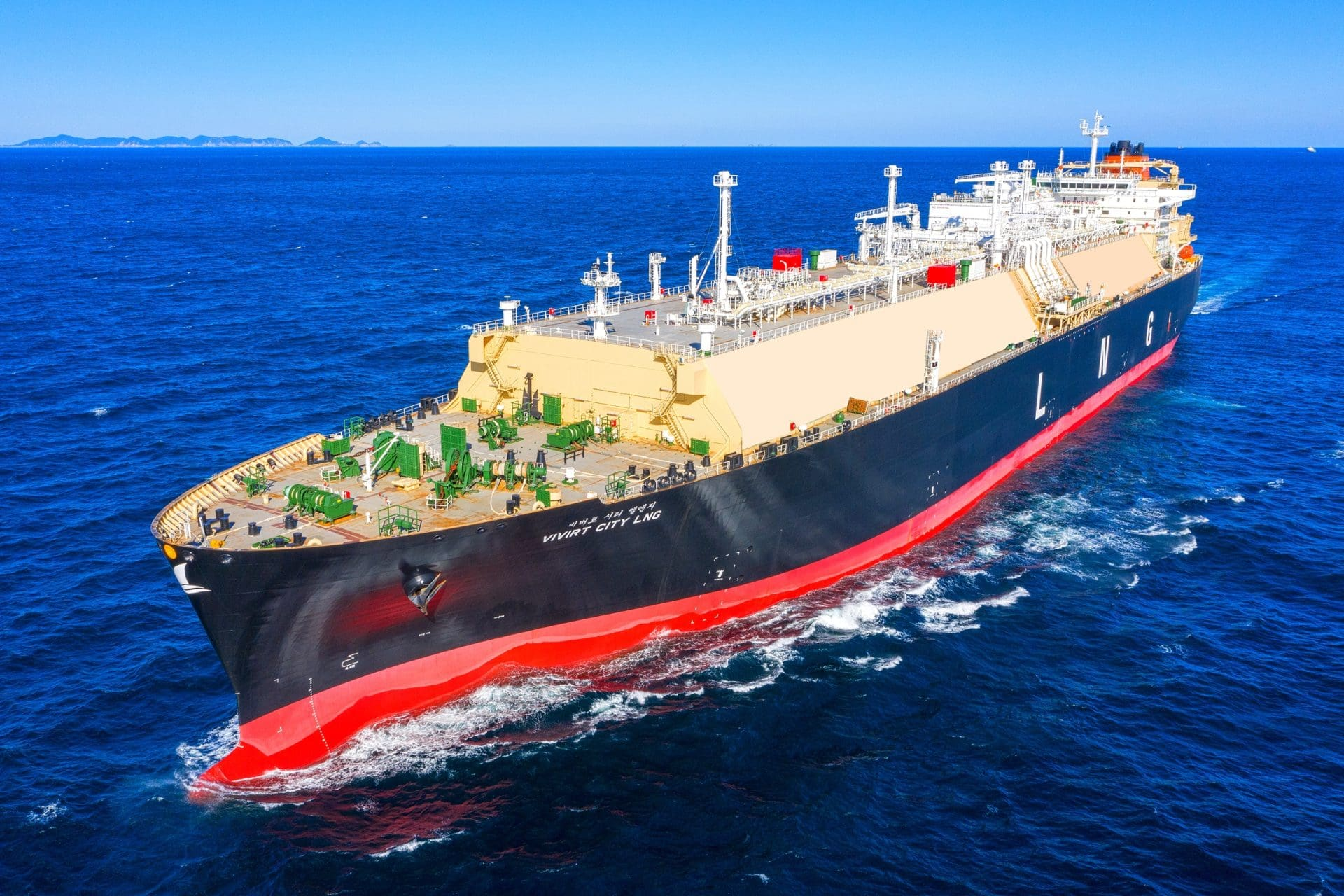Despite the intensive delivery of liquefied natural gas (LNG) carriers, Pratiksha Negi, an analyst at independent shipping analysis firm Drewry, questions whether there will be enough seaworthy LNG carriers to meet demand by 2030. Can the fleet be expanded rapidly to cope with the surge in liquefaction capacity and stricter environmental standards before 2030?

According to Drewry’s latest LNG forecast report, LNG production capacity is expanding rapidly, and fleet growth will continue to suppress freight rates through 2025-2026.
However, Drewry anticipates that as large-scale liquefaction projects with annual capacities exceeding 170 million tons come online, and numerous planned projects (totaling over 200 million tons/year) secure final investment decisions (FID), the market may return to balance starting in 2027. By 2030, this is expected to generate demand for approximately 150-180 new LNG carriers. Higher replacement tonnage requirements and environmental regulatory demands will further boost vessel demand.
In fact, due to the continued strong delivery of new vesselss, the current LNG shipping industry is facing the problem of fleet oversupply. It is estimated that in 2025, the size of the LNG carrier fleet will increase by 9.6%, and 89 LNG carriers will be put into operation. This trend will continue in 2026 and 2027, with 94 and 92 LNG carriers planned to be delivered respectively.
Drewry noted in its report that high delivery volumes of LNG carriers will continue to expand the fleet size through 2027, after which growth will gradually slow. Regarding new orders, the LNG carrier market experienced a peak in 2023-2024 and will remain at lower levels in 2025-2026.
As a large number of planned projects obtain FID, new demand for vessels will be generated. It is expected that the order volume of LNG carriers will gradually recover from 2027; at the same time, about 170 million tons/year of production capacity under construction will be put into production before 2027, absorbing existing vessel overcapacity while creating demand for vessels to serve capacity coming online after 2027.
According to Drewry’s order book data, approximately 75% of LNG carrier orders are structured under long-term charter agreements, with some contracts featuring structural flexibility. Given the long-term contract nature of LNG transportation, new order momentum is expected to persist. This will be particularly evident when newly built LNG carriers (under construction) begin serving ongoing LNG projects, driving new orders to meet over 2 million tons per annum of planned capacity (not yet contracted).
Due to fleet overcapacity and weak earnings, shipowners are being forced to refit or dismantle older vessels, posing high idle costs and inefficient berthing. Ship dismantling activity is expected to surge starting in 2025, peaking in 2028. Furthermore, the decreasing age of dismantled vessels and tightening environmental regulations will pose challenges to the current state of existing fuel oil tankers.
By the end of July 2025, a record eight LNG carriers had been scrapped, with the volume of scrapping expected to rise further this year.
Despite widespread industry speculation that steam turbine LNG carriers will remain compliant with International Maritime Organization (IMO) regulations longer than anticipated, Drewry believes compliance alone is insufficient to extend the operational lifespan of steam-powered LNG carriers.
According to a Drewry report, most older LNG carriers—particularly those over 15 years old—are likely to face demolition pressure. Currently, only 15% of turbine-powered LNG carriers are under 15 years old and are expected to be deployed for short-haul operations after 2030. However, Drewry is skeptical about the feasibility of this option for turbine-powered LNG carriers.
By 2030, regulations and environmental scrutiny on dual-fuel diesel-electric (DFDE) and tri-fuel diesel-electric (TFDE) LNG carriers – particularly in terms of emissions performance, fuel efficiency and safety compliance – are expected to continue to tighten, stimulating demand for modern vessels.
Fleet renewal will drive demand for newbuildings. At the same time, increasingly stringent environmental regulations will compel shipowners and operators to retire older vessels, which are becoming increasingly uneconomical and less able to meet tightening maritime regulations. Companies such as Mitsui OSK Lines and QatarEnergy have already begun replacing their existing fleets.
Drewry forecasts that LNG shipping will gradually shift toward long-haul trade as European demand peaks in 2028-2029 and begins to decline. After 2030, as Europe prioritizes its net-zero emissions goals, current trade routes between the U.S. and Europe will start to transform.
Meanwhile, Asian demand will remain robust over the long term, accounting for over 70% of global LNG trade by 2040. The shift in U.S. exports from Europe to Asia, coupled with sustained growth in Asian demand, will strengthen U.S.-Asia trade, leading to longer shipping distances and increased vessel demand. As new terminal trade routes continue to expand, demand for ton-miles will also be boosted in the long run.
Drewry notes that the potential shortages resulting from the rebalancing of supply and demand will drive up freight rates in the long term. Its baseline scenario forecasts that 150-180 new LNG carriers will be needed by 2030, given the 200 million tonnes/year of planned capacity expected to reach finalized orders between 2025 and 2027. The upcoming commissioning of liquefaction capacity (170 million tonnes/year by 2027) will gradually absorb the excess capacity created by the peak in vessel deliveries between 2025 and 2027. Furthermore, if new orders fail to recover, LNG shipping will face a capacity shortage by 2030.


